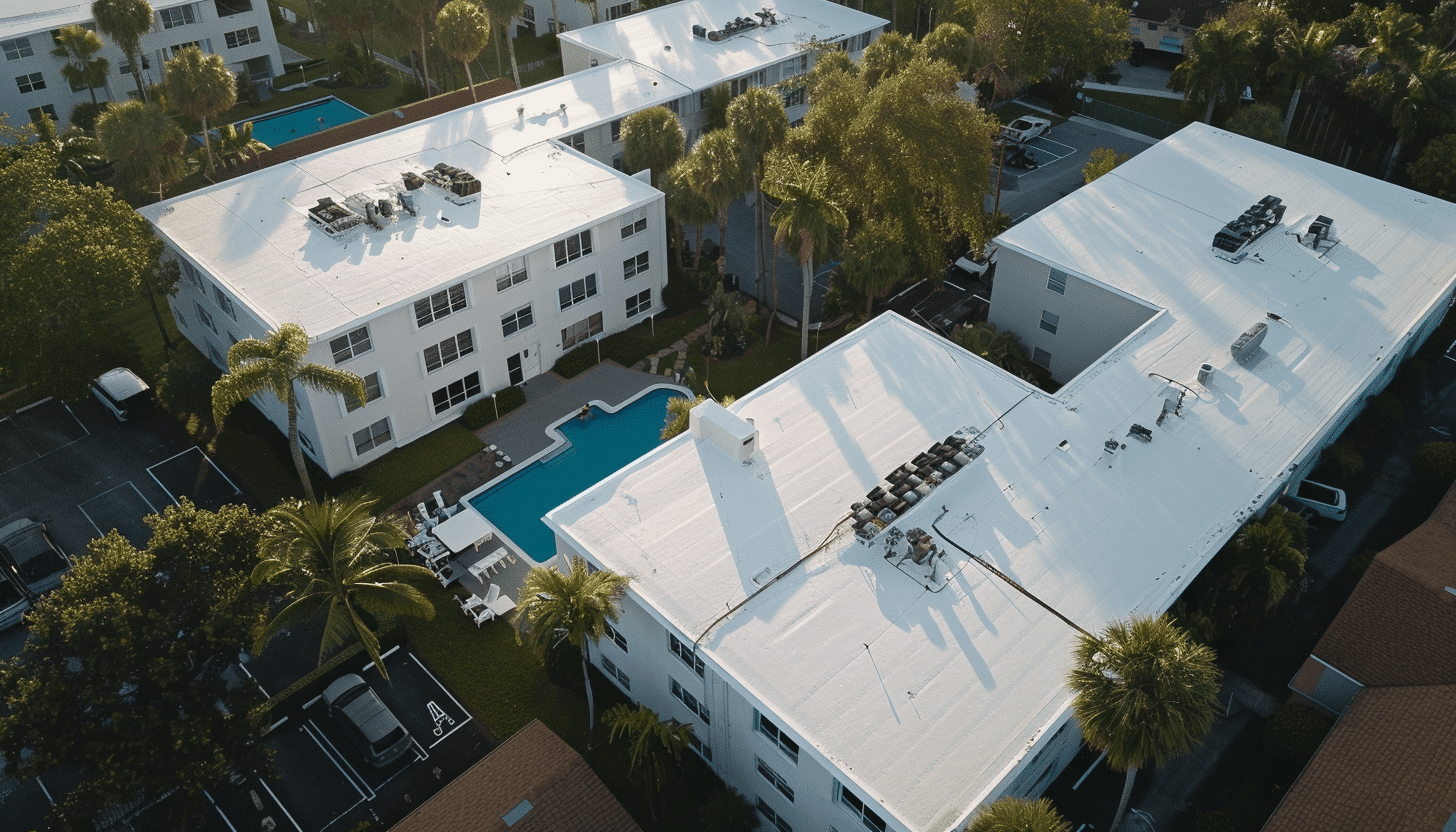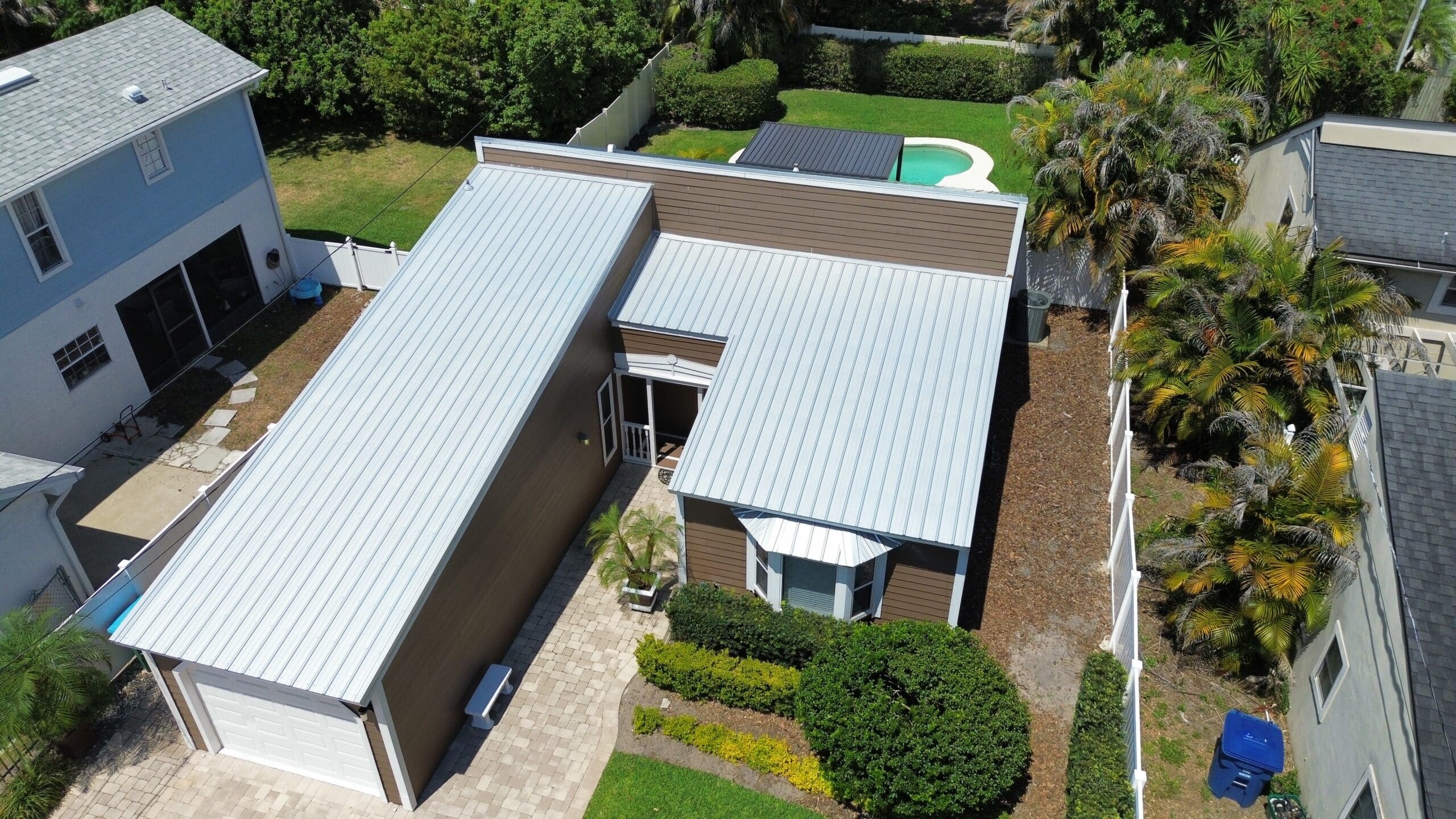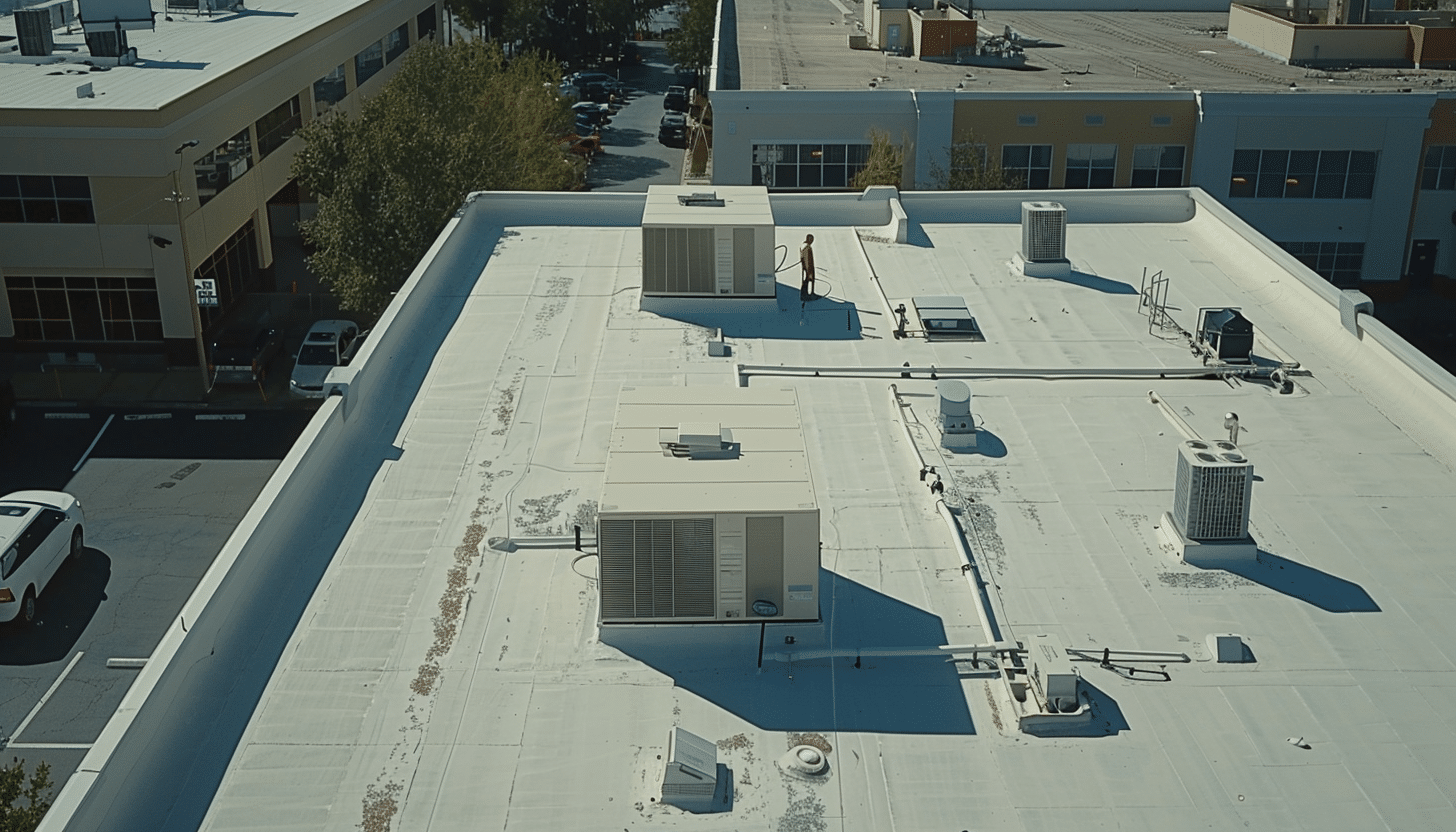Choosing the right materials for flat roofs is essential for ensuring durability, energy efficiency, and overall performance. Flat roofs are popular for both commercial and modern residential buildings due to their sleek appearance and functional benefits. In this blog, we’ll explore the top materials for flat roofs, delving into their advantages, applications, and maintenance requirements. This guide will help you make an informed decision for your next roofing project.
Benefits of Flat Roofs
Before diving into the materials, let’s discuss why flat roofs are a popular choice:
- Efficient Use of Space: Flat roofs provide additional usable space for rooftop gardens, HVAC systems, or solar panels.
- Energy Efficiency: Flat roofs can be designed to reflect sunlight, reducing cooling costs in the summer.
- Ease of Maintenance: The flat surface makes it easier to inspect and maintain.

Common Materials for Flat Roofs
Built-Up Roofing (BUR)
Built-up roofing (BUR) is a traditional flat roofing material made from layers of bitumen and reinforcing fabrics. These layers create a durable and waterproof surface.
Advantages:
- Durability: Multiple layers offer excellent protection against weather and physical damage.
- Fire Resistance: BUR systems have good fire-resistant properties.
- Cost-Effective: Typically more affordable compared to other materials.
Maintenance:
- Regular Inspections: Check for cracks and blisters.
- Prompt Repairs: Fix any damage immediately to prevent leaks.
Modified Bitumen
Modified bitumen is an evolution of BUR, combining asphalt with polymerized rubber or plastic to enhance performance.
Advantages:
- Flexibility: Can withstand extreme temperatures without cracking.
- Ease of Installation: Available in peel-and-stick or torch-down applications.
- Water Resistance: Excellent protection against water infiltration.
Maintenance:
- Annual Checks: Inspect for punctures and seams.
- Cleaning: Remove debris regularly to prevent water pooling.

EPDM (Ethylene Propylene Diene Monomer)
EPDM is a synthetic rubber membrane known for its longevity and versatility.
Advantages:
- Longevity: Can last 20-30 years with proper maintenance.
- Flexibility: Remains flexible in various temperatures.
- Eco-Friendly: Often made from recycled materials and can be recycled at the end of its life.
Maintenance:
- Periodic Inspections: Look for any signs of punctures or shrinkage.
- Cleaning: Keep the surface clean to avoid algae growth.
TPO (Thermoplastic Olefin)
TPO is a single-ply roofing membrane that combines the benefits of EPDM and PVC roofs.
Advantages:
- Energy Efficiency: Reflects sunlight, reducing cooling costs.
- Durability: Resistant to UV radiation, chemical exposure, and punctures.
- Seam Strength: Heat-welded seams provide superior durability.
Maintenance:
- Regular Cleaning: Remove dirt and debris.
- Inspections: Check seams and flashing regularly.
PVC (Polyvinyl Chloride)
PVC roofing membranes are known for their strength and longevity, ideal for flat roofs.
Advantages:
- Durability: Resistant to chemical damage and punctures.
- Energy Efficient: Reflective surface helps reduce cooling costs.
- Fire Resistant: High resistance to fire.
Maintenance:
- Routine Inspections: Look for signs of wear and tear.
- Cleaning: Keep the surface clean to maintain reflectivity.

Spray Polyurethane Foam (SPF)
SPF roofing involves spraying a liquid that expands into a foam, creating a solid, seamless roof covering.
Advantages:
- Insulation: Provides excellent thermal insulation.
- Seamless Application: Reduces the risk of leaks.
- Longevity: Can last over 20 years with proper maintenance.
Maintenance:
- Regular Inspections: Check for punctures and UV damage.
- Re-coating: Apply a protective coating every few years to extend life.
Metal Roofing
Metal roofing, though less common for flat roofs, offers durability and a modern look.
Advantages:
- Durability: Long-lasting and can withstand extreme weather.
- Aesthetic Appeal: Offers a sleek, modern look.
- Fire Resistant: Non-combustible material.
Maintenance:
- Inspections: Regularly check for rust and corrosion.
- Cleaning: Keep the surface free from debris to prevent water pooling.
Choosing the Right Material
When selecting materials for flat roofs, consider the following factors:
- Climate: Choose a material that can withstand your local weather conditions.
- Budget: Consider both initial installation costs and long-term maintenance expenses.
- Building Use: Different materials may be better suited for commercial versus residential applications.
- Longevity: Consider the lifespan of the material and how often it will need to be replaced or maintained.

Installation and Maintenance Tips
Installation Tips
- Hire Professionals: Ensure the installation is done by experienced professionals to avoid future issues.
- Proper Insulation: Adequate insulation can enhance energy efficiency and comfort.
- Drainage: Ensure proper drainage systems are in place to prevent water pooling.
Maintenance Tips
- Regular Inspections: Conduct bi-annual inspections and after severe weather events.
- Cleanliness: Keep the roof surface clean to prevent damage from debris.
- Prompt Repairs: Address any issues immediately to avoid more significant problems
FAQs
What is the best material for a flat roof?
The best material depends on your specific needs and budget. EPDM and TPO are popular choices due to their durability and energy efficiency.
How long do flat roofs last?
Flat roofs can last anywhere from 10 to 30 years, depending on the material and maintenance.
Are flat roofs more prone to leaks?
Flat roofs are more susceptible to leaks if not properly maintained, but modern materials and proper installation can mitigate this risk.
Can I install solar panels on a flat roof?
Yes, flat roofs are ideal for solar panels due to their ample space and accessibility.
How often should I inspect my flat roof?
It’s recommended to inspect your flat roof at least twice a year and after any major weather events.
What are the signs that my flat roof needs repair?
Look for signs such as water stains on the ceiling, visible cracks, blisters on the roof surface, or any sagging areas.
How do I maintain my flat roof?
Regular cleaning, removing debris, and checking for any damage can help maintain your flat roof. It’s also important to schedule professional inspections and maintenance.
Is flat roofing environmentally friendly?
Many flat roofing materials, like TPO and EPDM, are made from recyclable materials and offer energy efficiency, making them environmentally friendly options.
Can a flat roof be insulated?
Yes, flat roofs can be insulated to improve energy efficiency and comfort within the building.
What is the cost of installing a flat roof?
The cost varies based on the material, roof size, and location. It’s best to get quotes from several contractors to understand the pricing.
Flat roofs offer a variety of benefits, and with the right materials, they can be a durable and efficient choice for both residential and commercial buildings. Understanding the options available and their respective advantages will help you make the best decision for your specific needs. Always consult with a professional roofing contractor to ensure you choose the best material for your flat roof and that it is installed and maintained correctly.

0 Comments